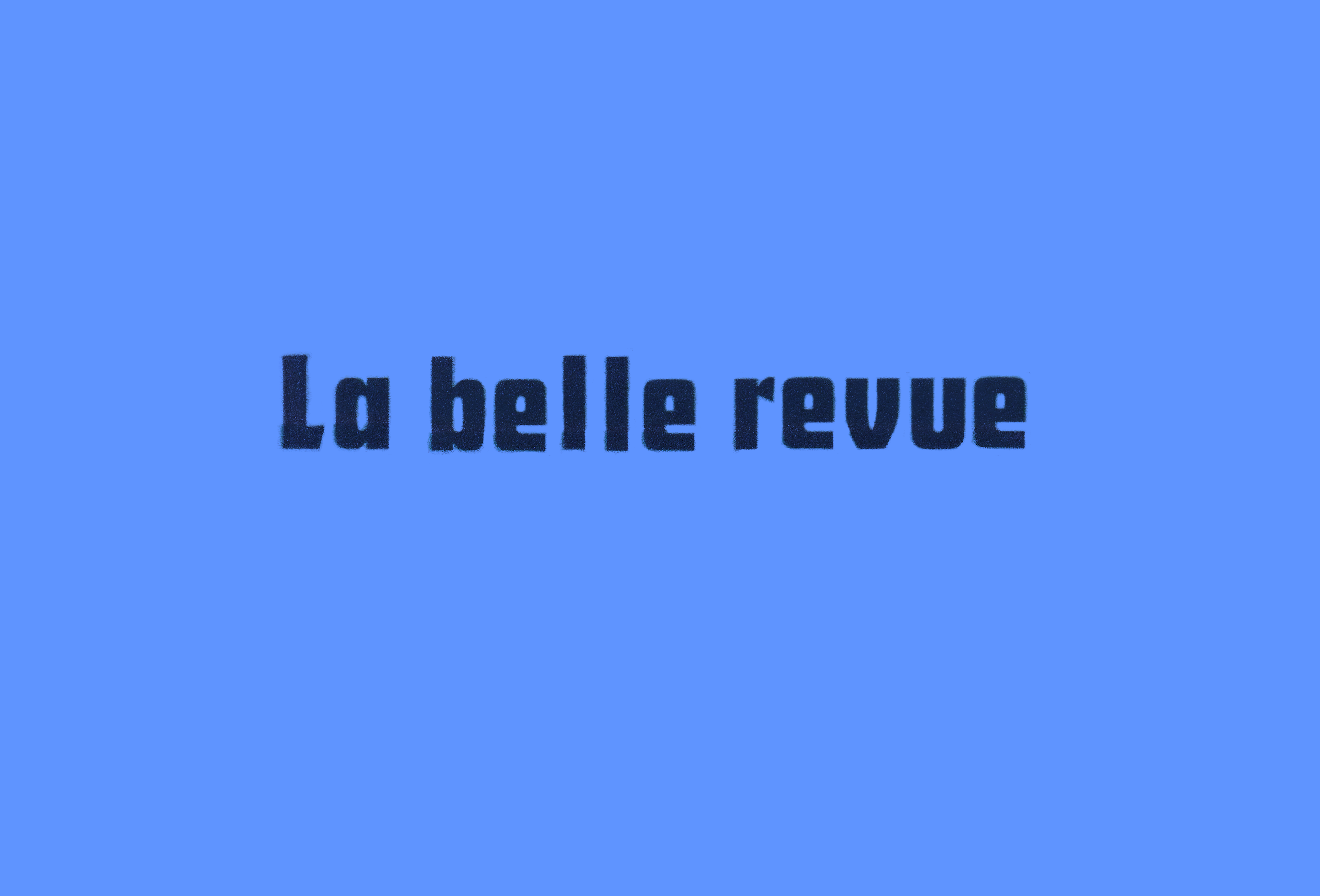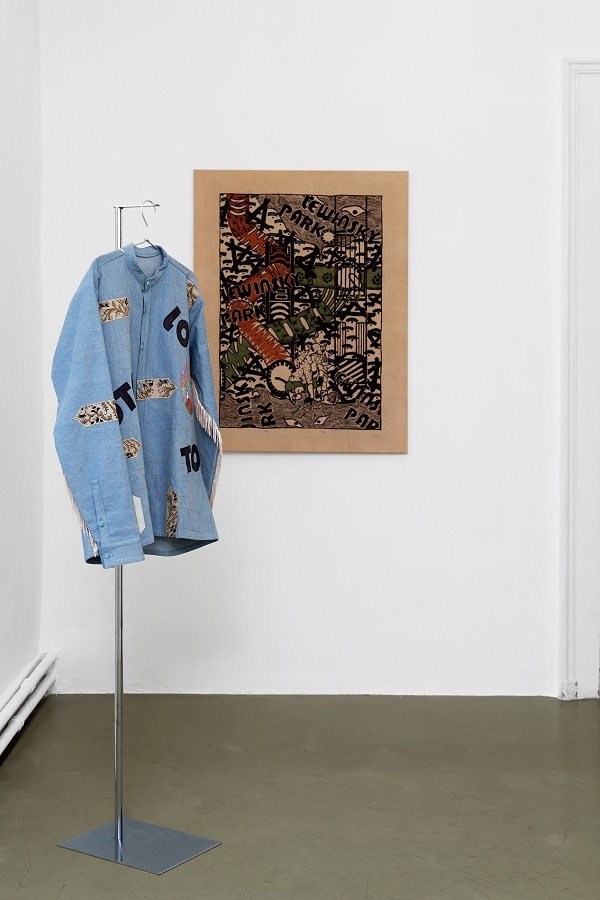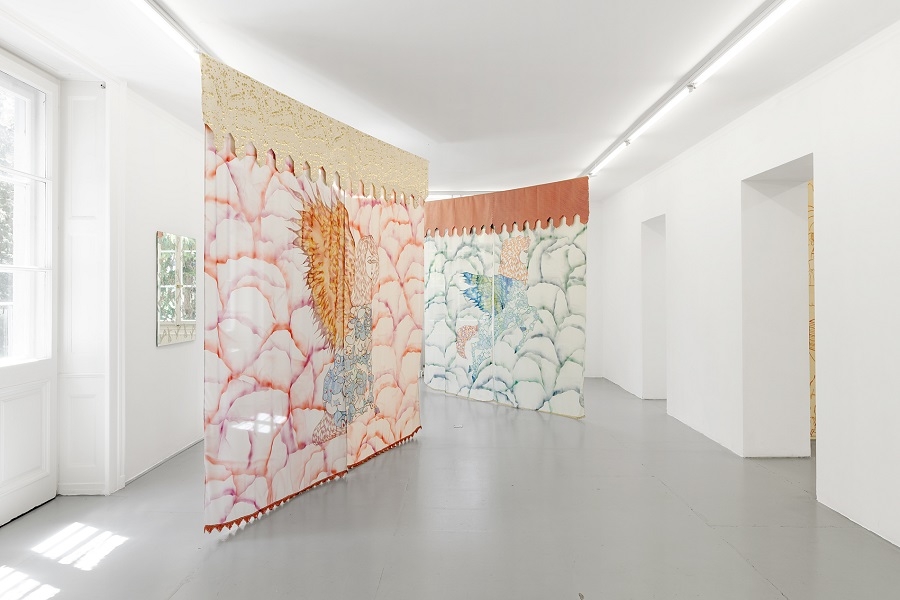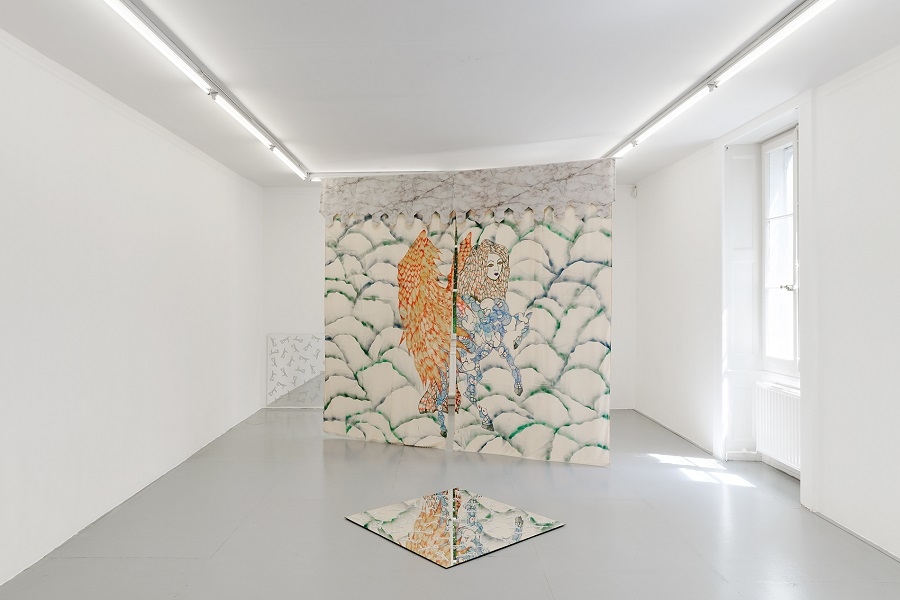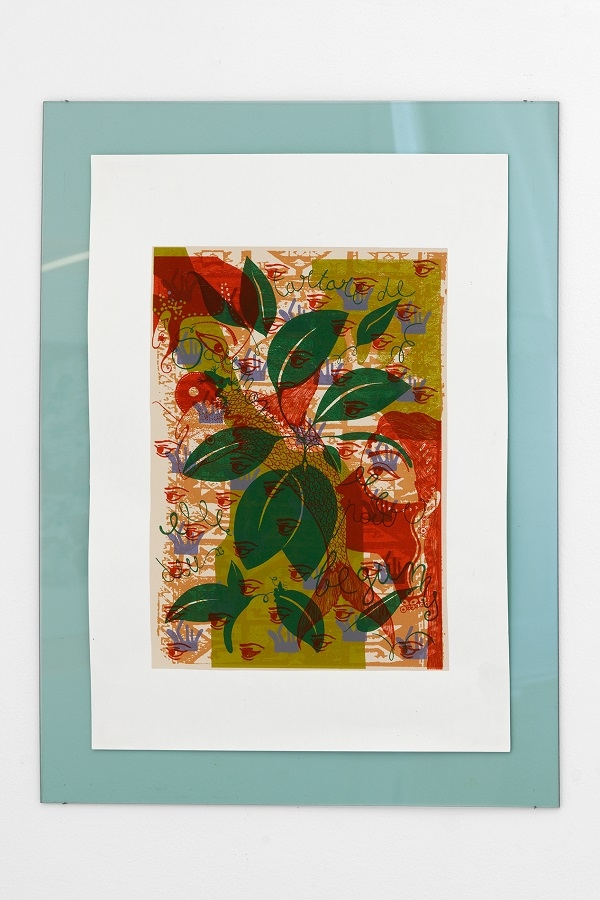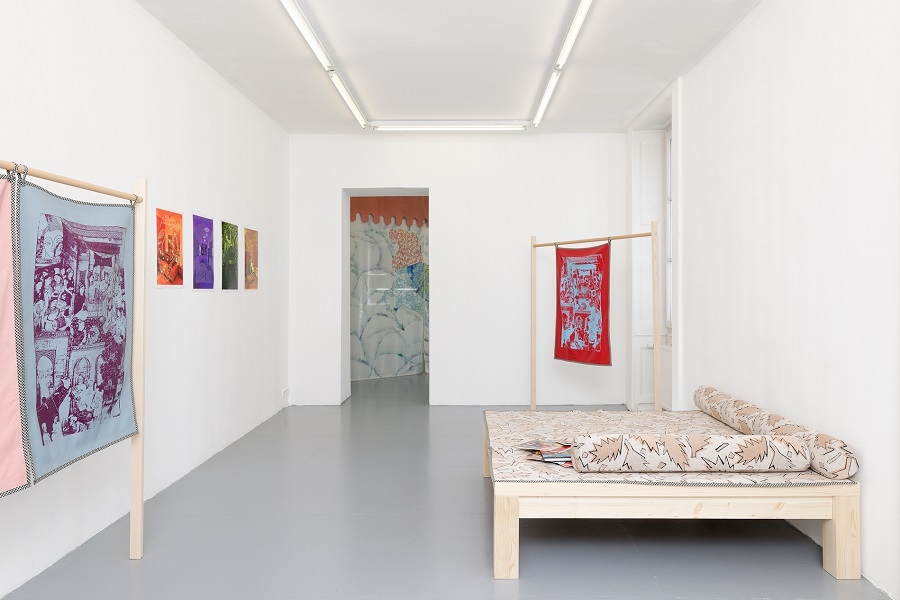By giving her solo exhibition at the Villa du Parc in Annemasse the title Pourquoi je suis tout bleu [Why I Am All Blue], Nadira Husain plunges us – as a kind of foreword to the visit – into the imaginary associated with this colour. A colour so strange for the Greeks and Romans of ancient times that they did not care to name it precisely, but that now simultaneously represents the consensus of globalised tastes and otherness. Jeans, the administration, and the cyberpunk aesthetic: in short, a joyous combination to which Michel Pastoureau has devoted an entire history1, a book that is generous from a Western perspective, the others remaining mostly out of sight. Blue, then, and an “I” and a “Why”! We have seen nothing yet, but here is an exhibition that already questions and affirms in one fell swoop, presenting itself like a door that is neither open nor closed, but both at once.
Invited as part of the thematic cycle No Fixed Identity dreamed up by the director of the art centre and curator Garance Chabert, Nadira Husain deploys her works – a vast collection, the oldest of which date from 2010, while others have not previously been shown – across the two floors of the former bourgeoise residence. The footbridge has been inaugurated to discover them from an autobiographical angle. Born in 1980, the French artist of Indian origins, based in Berlin for several years now, seems to sustain her practice through her ability to position herself, as an individual, at the crossroads of her cultural origins, her own background, and her convictions. What strikes us is her intelligence at drawing on all of them, allowing for responses and sometimes mergers, weaving encounters between the art of Mughal miniatures, smurfs, or radical feminism that are as delightful as they are unexpected.
In this way, we move forward to the heart of a tangled web of extended arms towards a multiple, constructed, and shifting identity. Two powerful protective figures with multiple limbs reside on the porch. Our mind wanders towards the Hindu pantheon, the skins are colourful, the sky is blue, blood is red, and all around dance the references that pictorial representations are wont to express: here, written out in full, an original title is extended – Only Paradoxes to Offer – that of Joan Scott2’s book. And here, behind this pair of pants decorated with a staring gaze, we might think we hear The Laugh of the Medusa, launched like a heavy volume by Hélène Cixous into the face of the author of the Second Sex. Exploring the ground floor of the Villa offers, through the discovery of artworks in various forms, a way of grasping why Nadira Husain tackles contemporary social issues head on. Hence her plant dyes produced in India in the context of a local, alternative micro-economy, or a set of textile pieces made in association with an Afghan tailor who had recently moved to the German capital. In all this, most concretely, there is a way of positioning herself politically by making her art a form of action. Besides the combination of techniques and the absence of hierarchy between what is art or craft, fine art or decorative art, subject or background, taking up a position in terms of her own heritage is also a question of inventing new representations capable of surpassing any dualistic thinking, capable of thwarting the old dichotomies and establishing a pleasant blurring of borders. A reader of Donna Haraway and militant feminist science fiction, the artist blithely re-casts gender questions, as well as the limits between humans and non-humans, by undertaking a brilliant collision of references to iconographies that we have rarely seen so intertwined. Upstairs, the syncretic power of her figurative art with its boundless imagination and taste for the ornamental thrives particularly in a mural, screen prints, and a series of three curtains that constitutes one of the most striking works in the exhibition.
